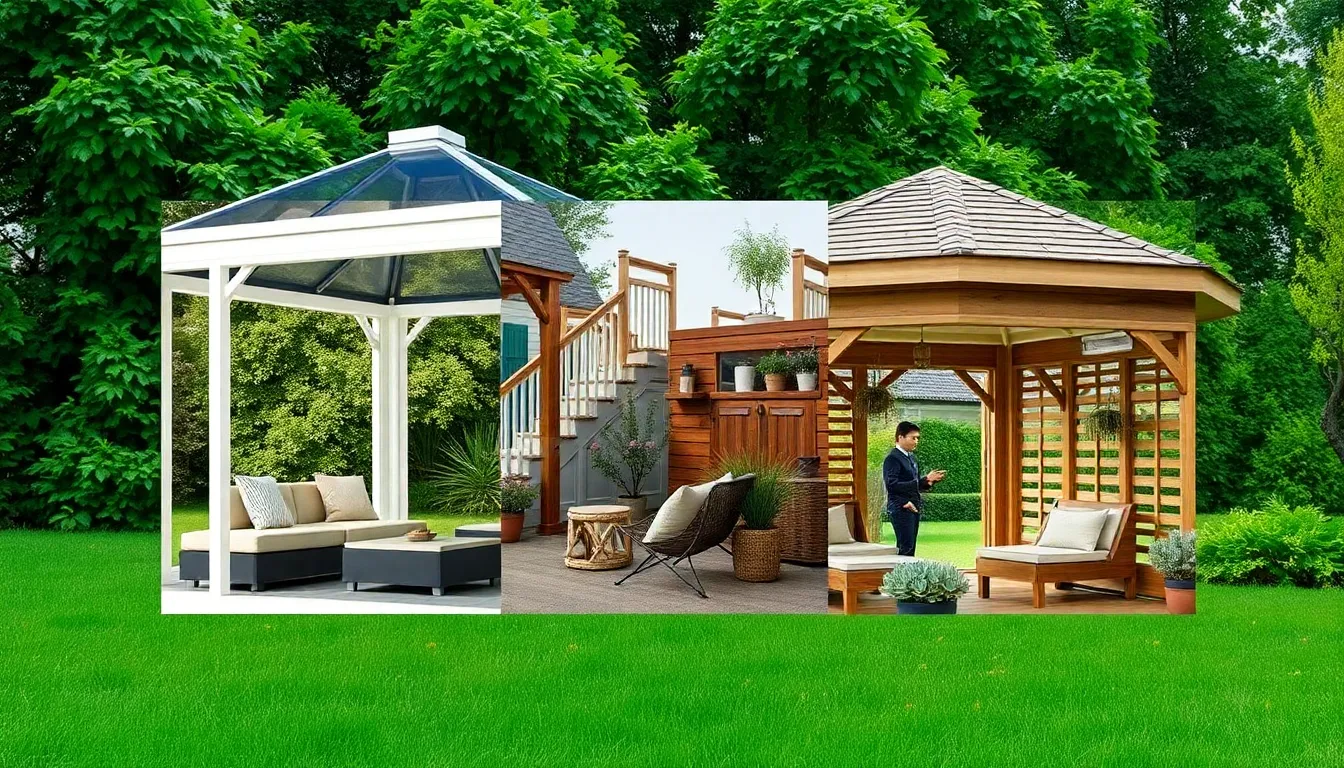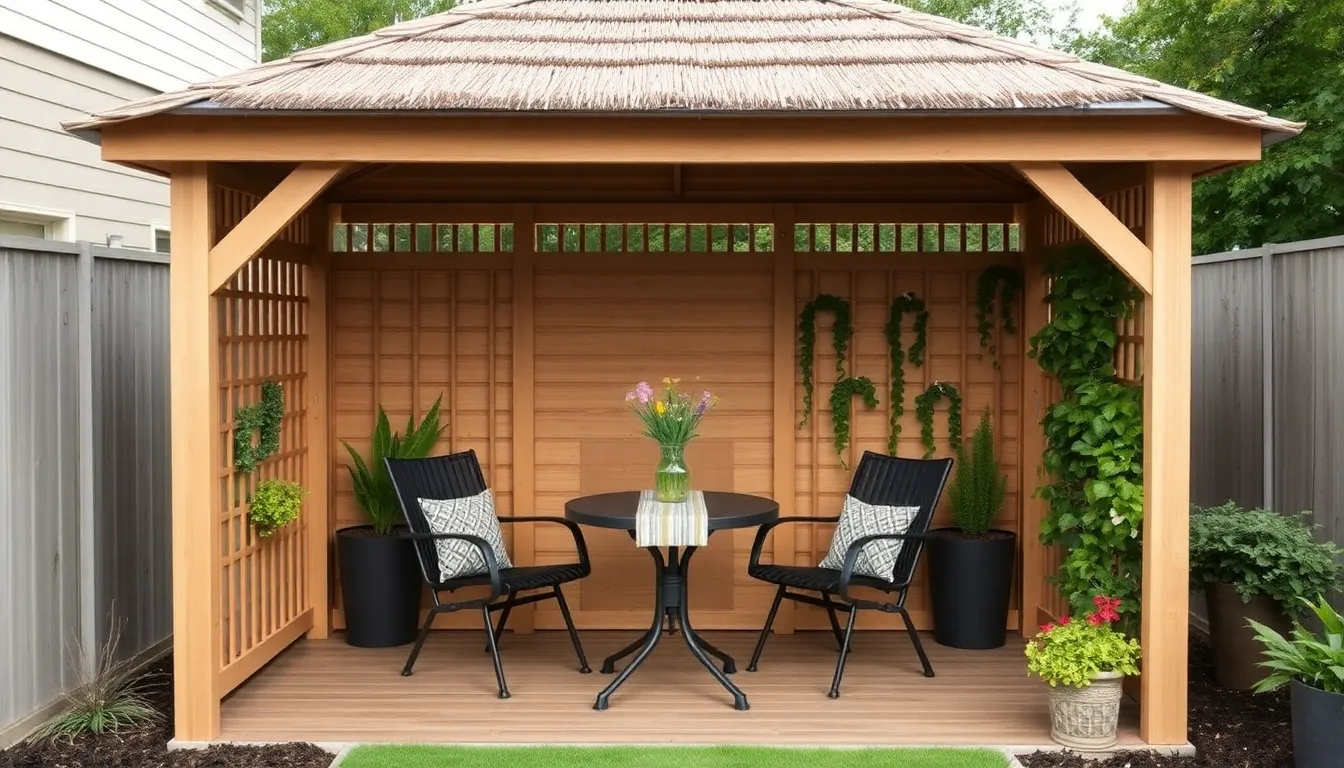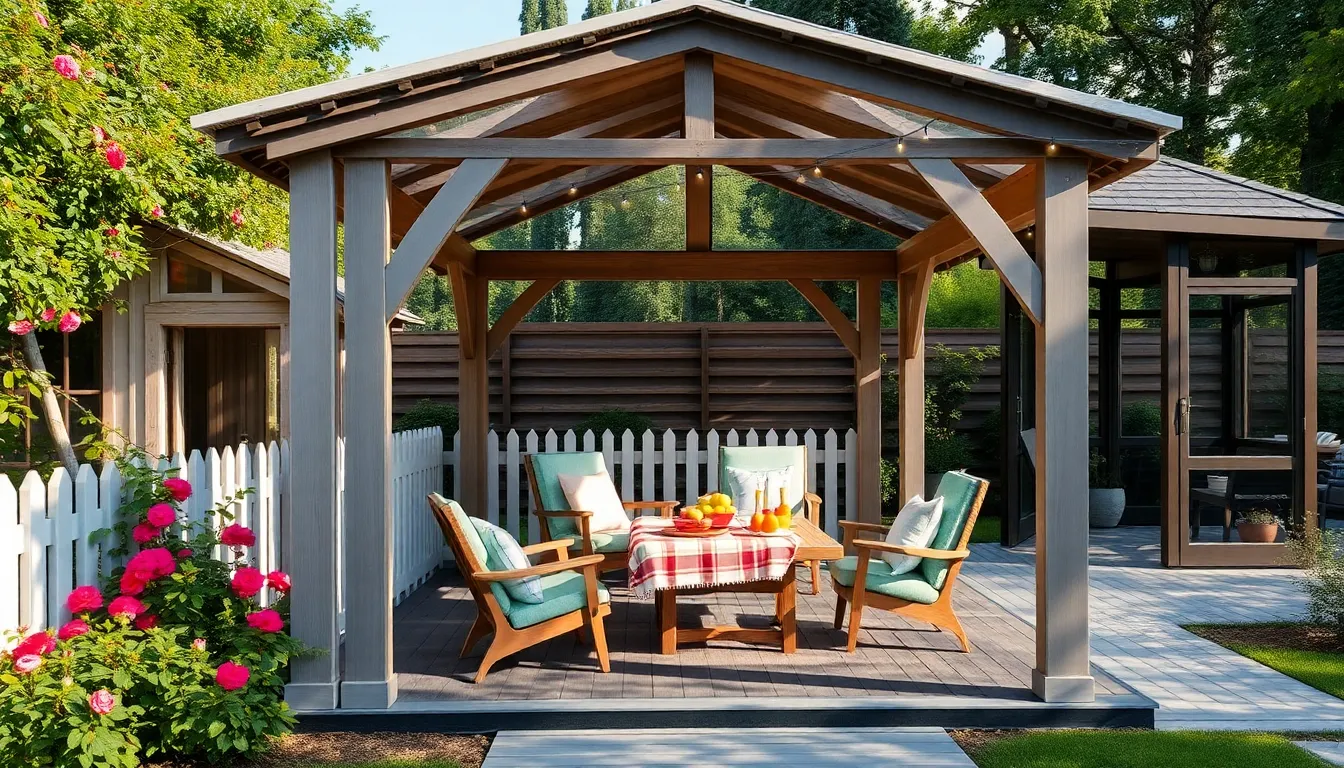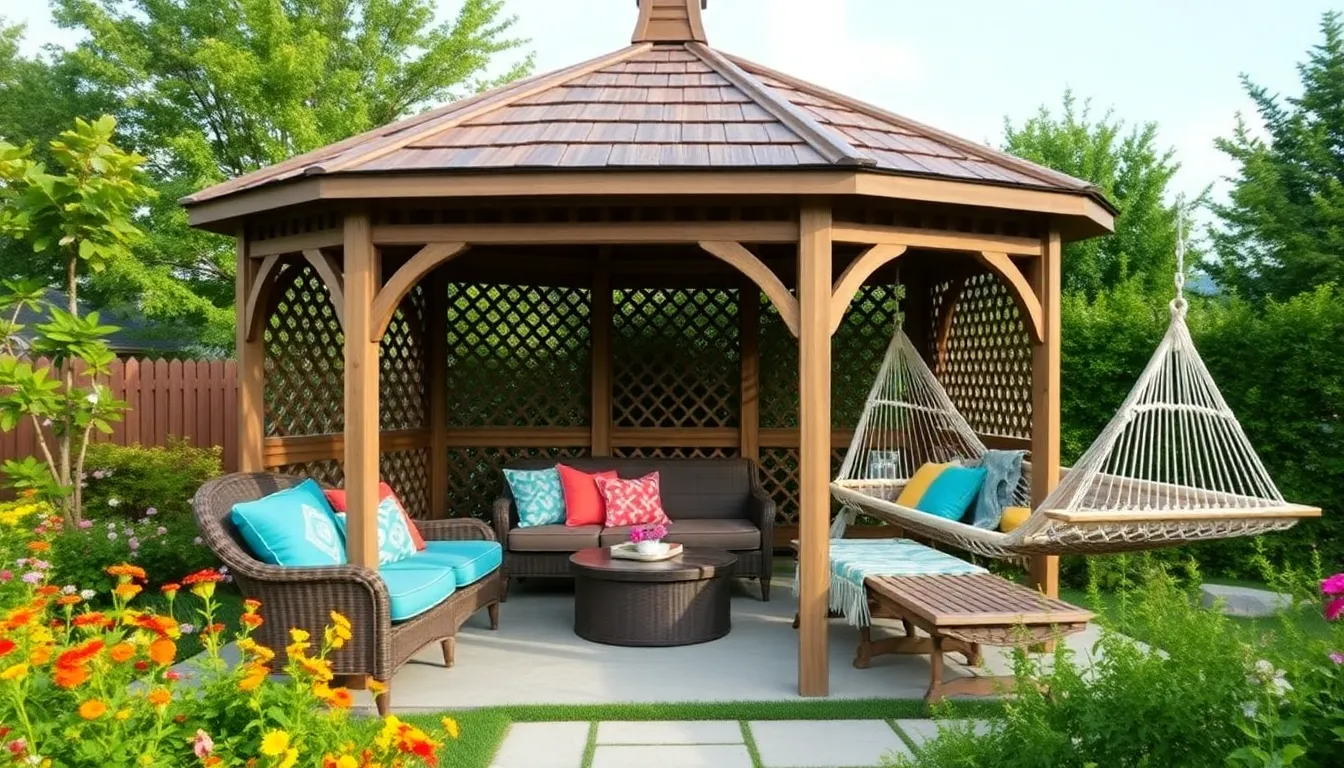Imagine stepping into your backyard and finding a serene retreat, a perfect blend of nature’s beauty and elegant design. Whether you’re a novice homeowner exploring new ways to enhance your outdoor space or a seasoned pro looking to add a fresh touch, gazebos offer a wonderful opportunity to transform any garden into a picturesque haven. The right gazebo design not only elevates your landscape but also extends your living area, creating a sanctuary where you can unwind, entertain, and enjoy the great outdoors all year round.
In this article, you’ll discover 15 inspiring gazebo designs that cater to various tastes and needs, from the simple and classic to the bold and contemporary. We’ll guide you through the key features and benefits of each design, helping you envision how these structures can seamlessly fit into your existing space. Whether you’re seeking a cozy nook for quiet reflection or a grand pavilion for lively gatherings, our curated selection promises to stir your imagination and spark actionable ideas to transform your outdoor living experience.
Classic Wooden Gazebo Elegance
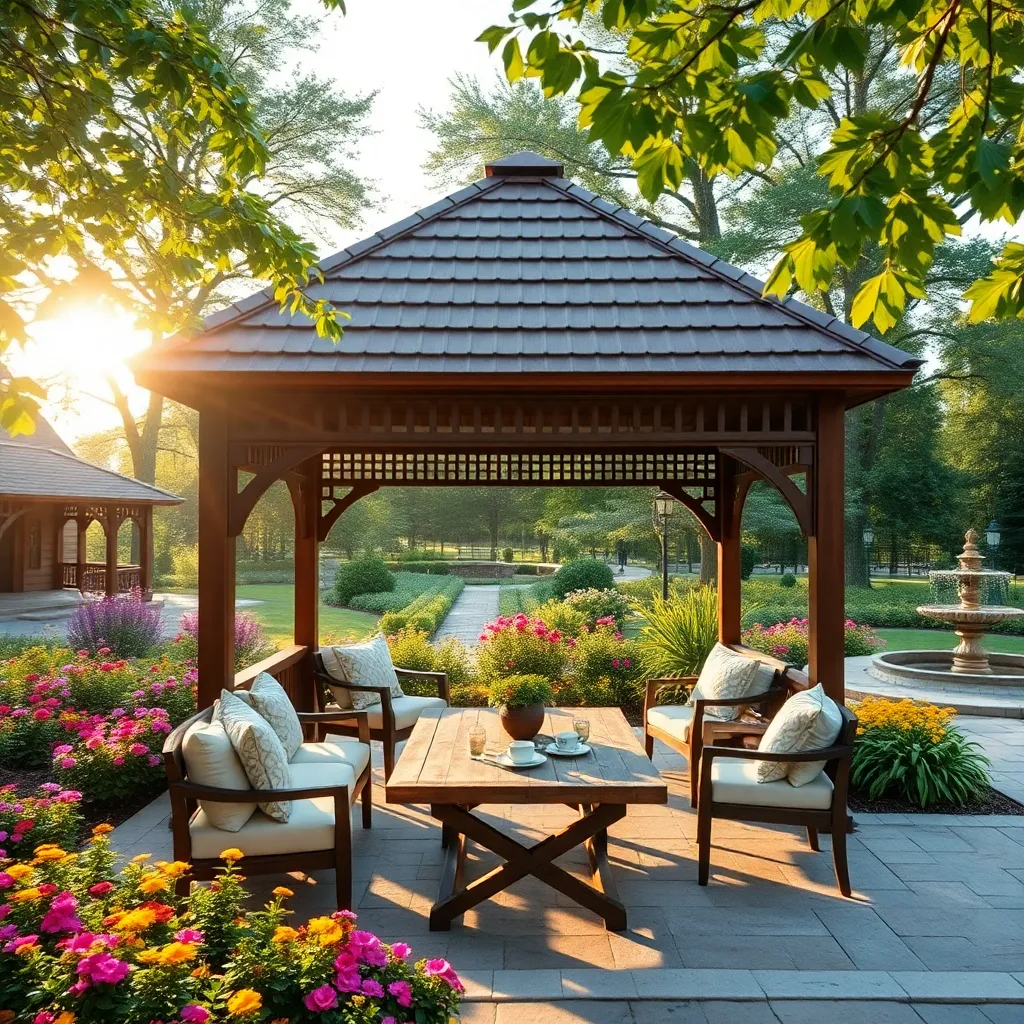
Embracing the timeless appeal of a classic wooden gazebo can instantly elevate any outdoor space with its elegance and functionality. Start by selecting durable wood types like cedar or redwood that not only offer natural resistance to decay and insects but also age beautifully. For beginners, consider a kit with pre-cut pieces and detailed instructions to simplify the construction process, ensuring a sturdy and aesthetically pleasing result. Place your gazebo thoughtfully—ideally in a spot that offers both sun and shade throughout the day, allowing it to become a versatile retreat.
For those seeking a more personalized touch, explore advanced design elements such as custom latticework or shingled roofs to enhance the gazebo’s architectural charm. Consider adding built-in seating or planters to seamlessly integrate your gazebo with the surrounding landscape. Lighting plays a crucial role in extending usability; incorporate solar-powered lights or string lights to create a warm, inviting ambiance. Don’t forget to seal the wood annually to protect against weathering and maintain its classic beauty for years to come.
Modern Minimalist Design Concepts
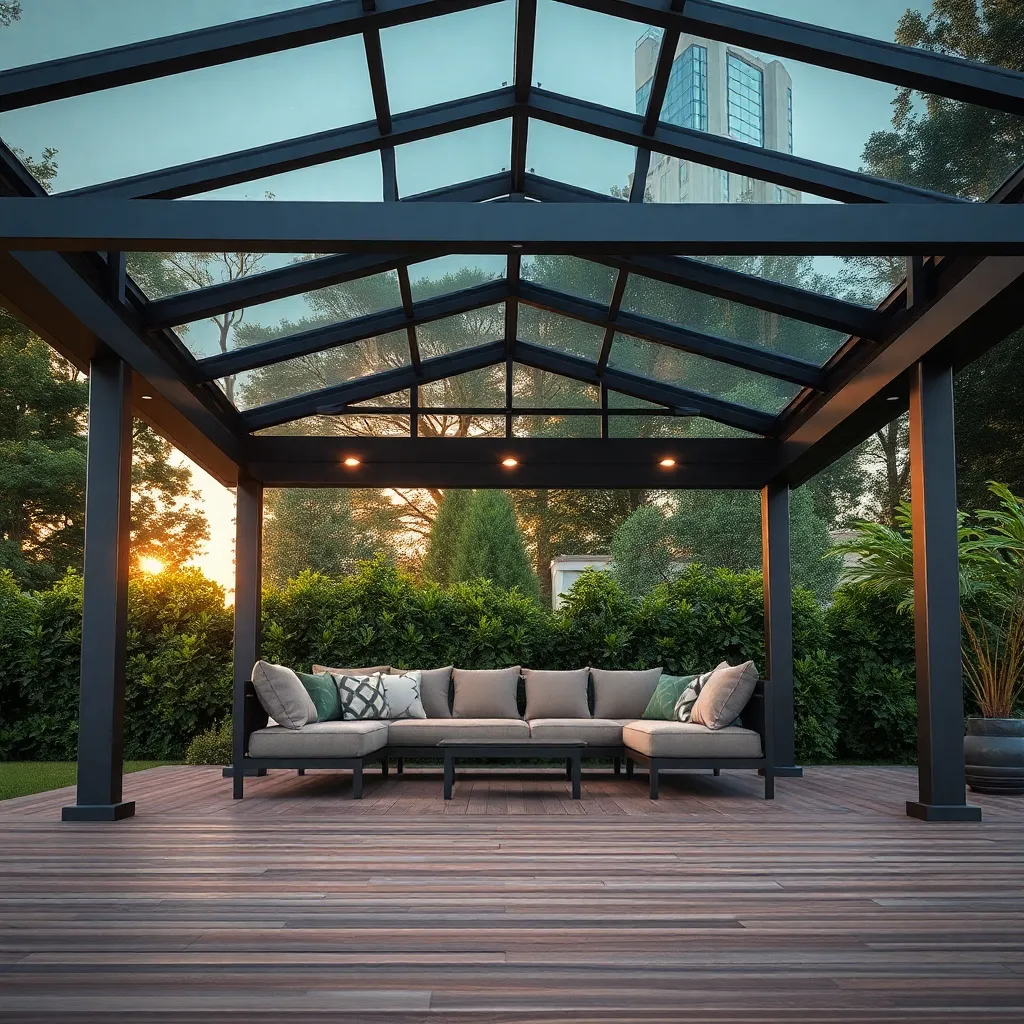
Embracing a modern minimalist design for your gazebo can create a sleek and inviting outdoor space. Focus on using clean lines and neutral color palettes to complement your existing surroundings. Opt for materials like steel or aluminum for their durability and low maintenance. Incorporate glass panels or retractable screens to maximize natural light while providing shelter from the elements. Consider a flat or gently sloping roof to maintain the minimalist aesthetic and ensure efficient water drainage.
When planning your minimalist gazebo, prioritize function with a simple, open layout. Start with a basic square or rectangular footprint—ideal dimensions are around 10×10 feet for small gatherings. Choose furniture with simple silhouettes that won’t clutter the space, such as a streamlined outdoor sofa or modular seating. For those looking to add a unique architectural touch, consider integrating a single bold feature like a suspended swing or a built-in fire pit to enhance both style and utility.
Rustic Charm with Natural Elements
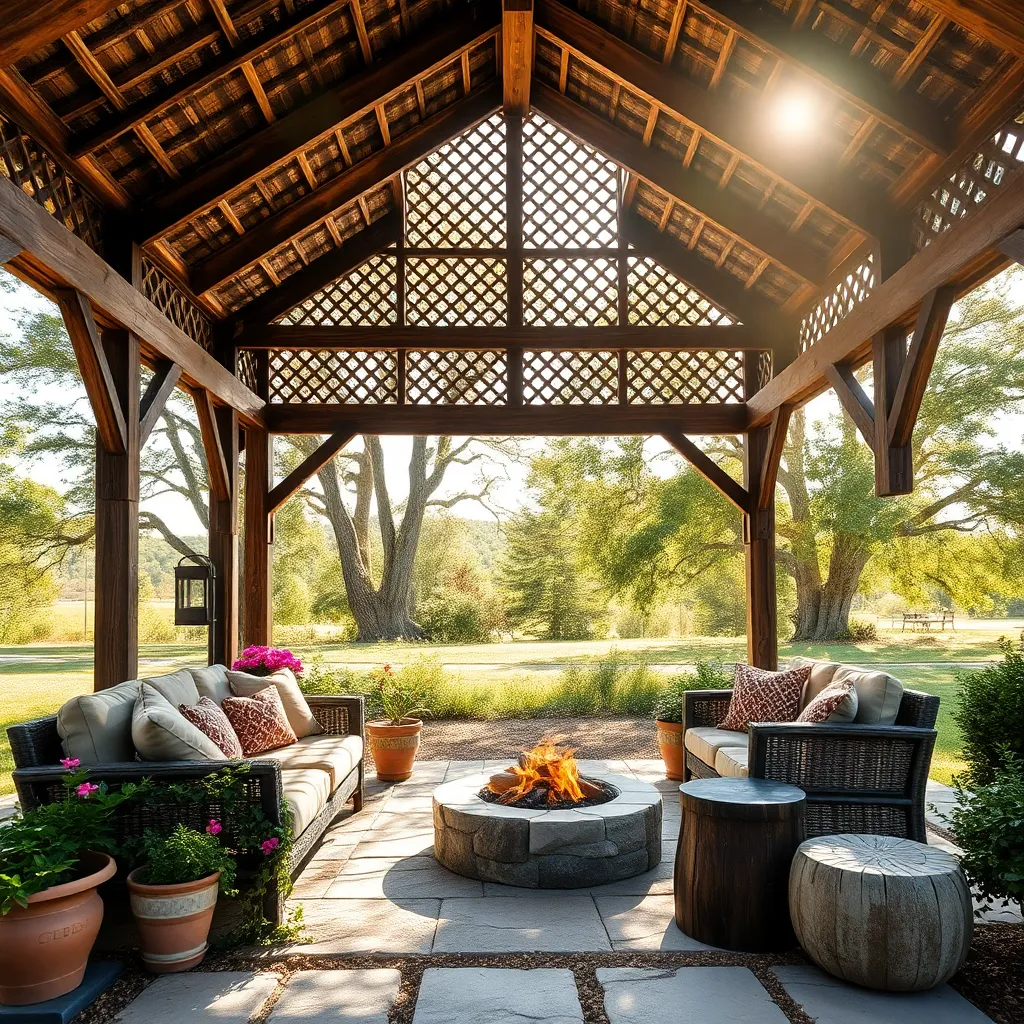
Infuse your outdoor space with rustic charm by incorporating natural elements into your gazebo design. Opt for materials like reclaimed wood or weathered stone to create a cozy, authentic feel. Beginners can start by using wooden beams for the structure, which provide both a sturdy frame and a natural aesthetic. For a more advanced touch, consider integrating a live edge wooden table or benches, maintaining the wood’s organic shape to enhance the rustic vibe.
To add depth and texture, think about incorporating natural fibers and greenery into your design. Hang a few woven baskets or macramé planters for a touch of bohemian flair. For those looking to bring in more greenery, try training climbing plants like ivy or wisteria along the structure—these not only offer shade but also blend the gazebo seamlessly with its surroundings. Remember to seal all wooden surfaces to protect against the elements, ensuring longevity and sustained charm.
Asian-Inspired Serenity Structures
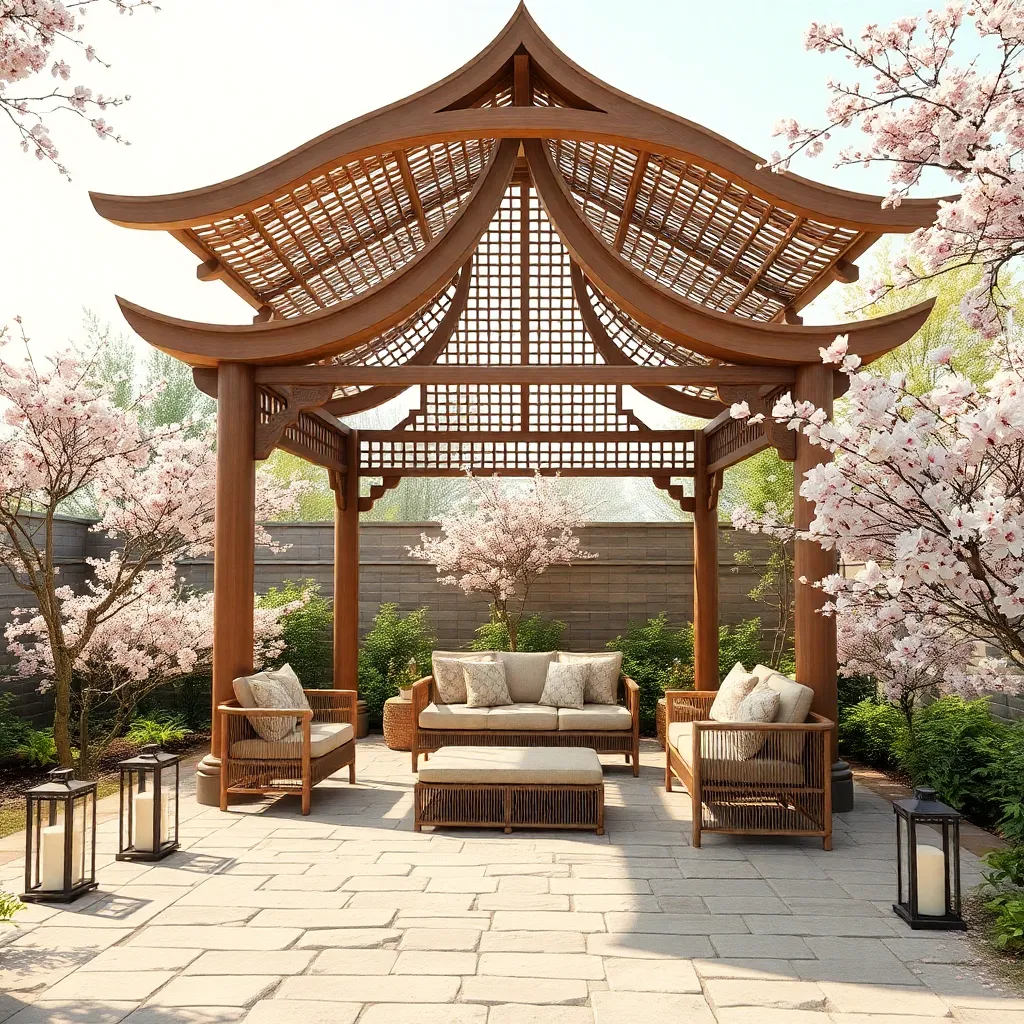
Transform your garden into a tranquil retreat with an Asian-inspired serenity structure. These gazebos often feature clean lines, natural materials, and harmonious proportions. For a classic touch, use bamboo or cedar wood, known for their durability and aesthetic appeal. Incorporate elements like a gently sloping roof and open sides to mimic traditional Asian architecture, allowing for natural ventilation and an unobstructed view of your garden.
For those looking to add a personal touch, consider incorporating a small water feature or Zen garden within your gazebo’s footprint. Sand and stone pathways can enhance the meditative feel, while strategically placed lanterns illuminate your space elegantly. Beginners can start by sketching a simple design, while experienced builders might explore adding intricate lattice work or carved wooden panels. Remember, the key to achieving serenity lies in simplicity and balance, so choose elements that complement your outdoor space without overwhelming it.
Victorian Style with Ornate Details
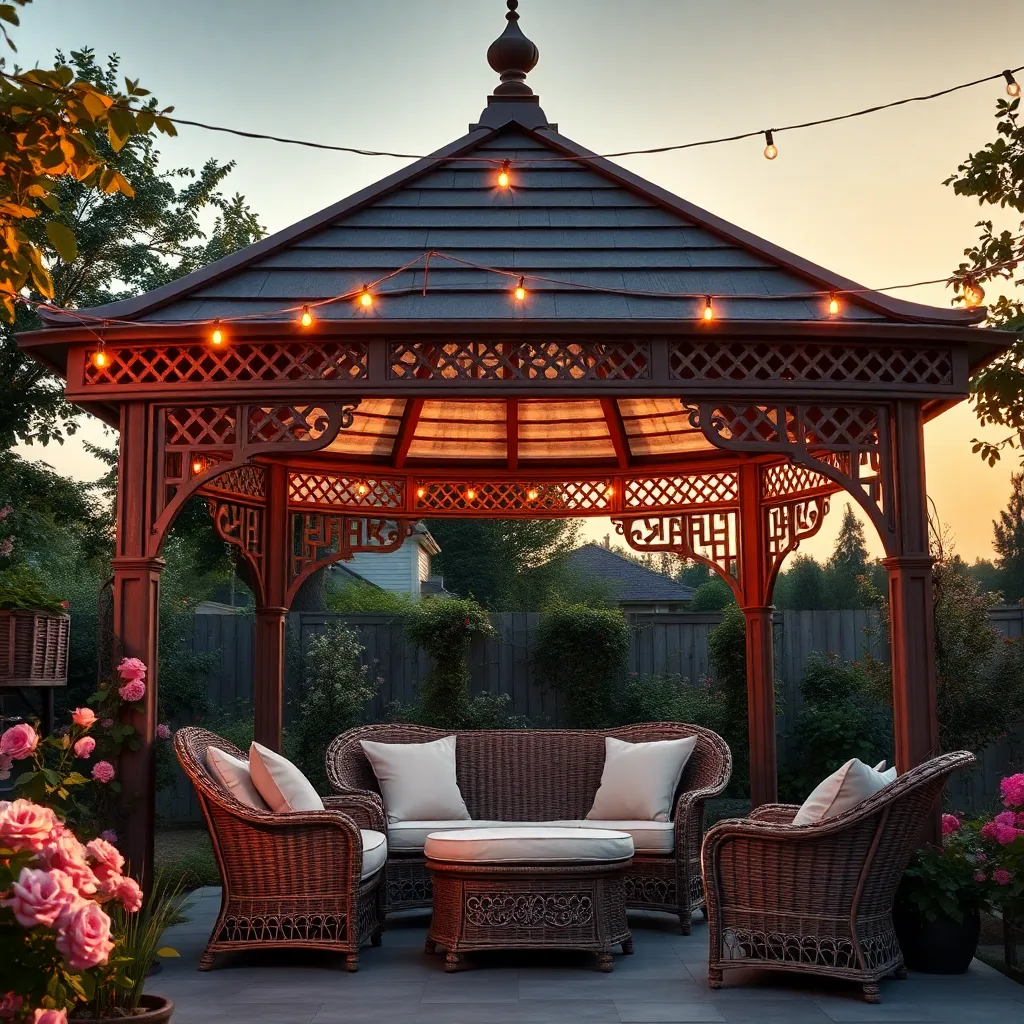
Transport your outdoor space back to the elegance of the 19th century with a Victorian-style gazebo featuring ornate details. These structures are typically crafted from wood, providing a warm and classic aesthetic, but they can also be constructed from wrought iron for a more durable and weather-resistant option. Intricate scrollwork and decorative railings are key features, adding to the charm and sophistication. To enhance the Victorian theme, consider including a cupola or finial on top. For beginners, starting with a prefabricated kit can simplify the process, ensuring precision in the ornate details.
For those with more experience, customizing your gazebo with additional embellishments can further elevate its elegance. Consider adding stained glass panels or intricate latticework for a truly personalized touch. When planning dimensions, aim for at least 8 feet in diameter to provide ample space for furniture and guests while maintaining a cozy atmosphere. Materials like cedar or redwood are recommended for their durability and natural resistance to decay. Remember to periodically treat the wood to preserve its beauty and integrity over time.
Eco-Friendly Gazebo Innovations
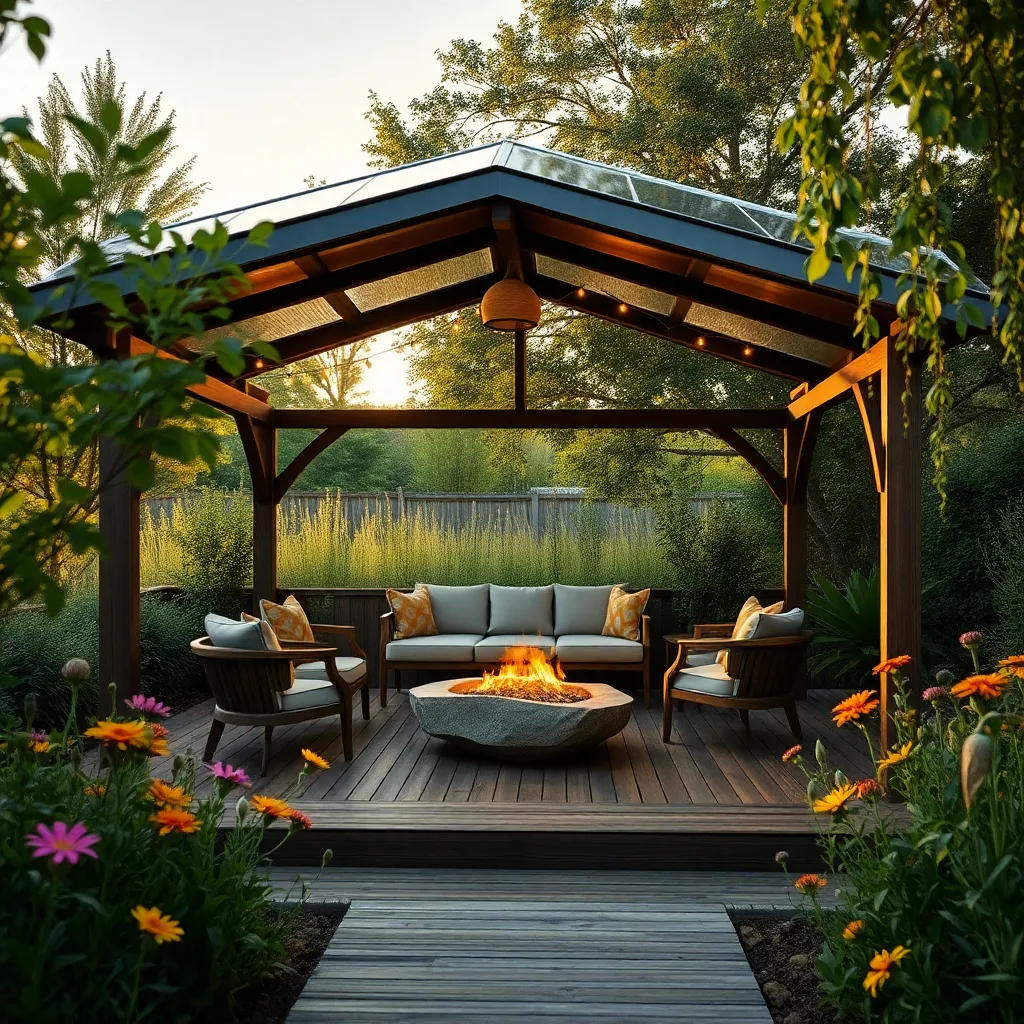
Incorporating eco-friendly innovations into your gazebo design not only benefits the environment but also enhances the aesthetic and functionality of your outdoor space. Consider using sustainably sourced wood like cedar or bamboo, which are both durable and naturally resistant to pests and weather. Opt for a living roof or green roof by planting drought-resistant vegetation on top of your gazebo, providing excellent insulation and a visually stunning touch to your garden.
For those looking to minimize their ecological footprint, integrating solar panels into your gazebo roof can be a game-changer. These panels can power lights or small appliances, making evening gatherings more sustainable. Choose recycled materials for the flooring and furniture, such as reclaimed wood or composite decking, to further reduce waste. Beginners can start with simple solar lighting, while experienced DIYers might install a rainwater collection system to nourish nearby plants, maximizing the eco-friendly potential of their space.
Compact Designs for Small Yards
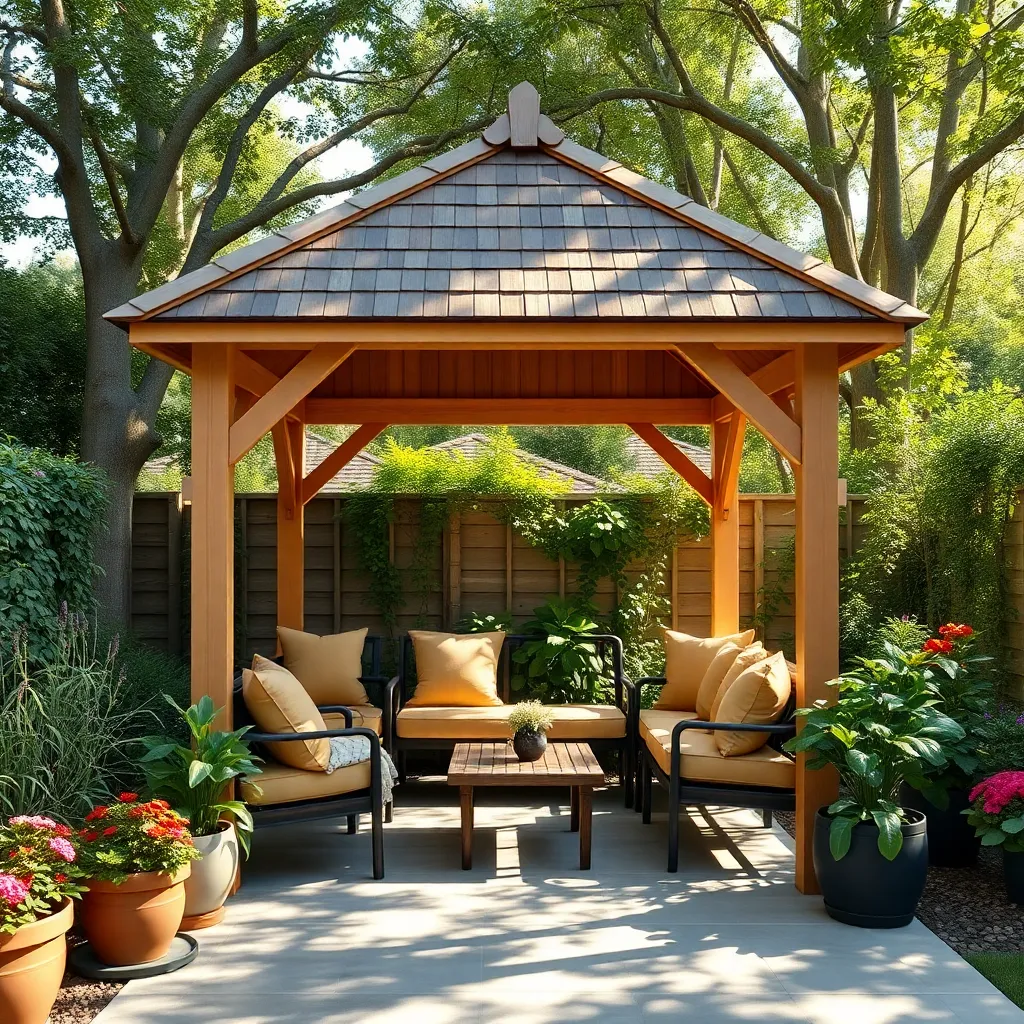
For homeowners with small yards, compact gazebo designs can maximize space while providing a cozy retreat. Opt for a **corner gazebo**, which utilizes often-overlooked yard spaces and can be as small as 6×6 feet. Choose materials like pressure-treated wood or durable metals such as aluminum to ensure longevity without sacrificing style. Adding a retractable canopy or **polycarbonate roofing panels** allows for adjustable shade and weather protection, making the space versatile throughout the seasons.
Consider incorporating **built-in seating** to enhance functionality without overcrowding the area. This can be achieved by integrating benches along the inner sides of the gazebo, offering seating as well as additional storage beneath. When planning the design, use a color palette that complements your home and garden, blending the structure seamlessly into your existing landscape. For those interested in advanced features, install LED lighting strips along the gazebo’s frame to extend usability into evening hours, creating a charming, illuminated space.
Pergola-Gazebo Hybrid Solutions
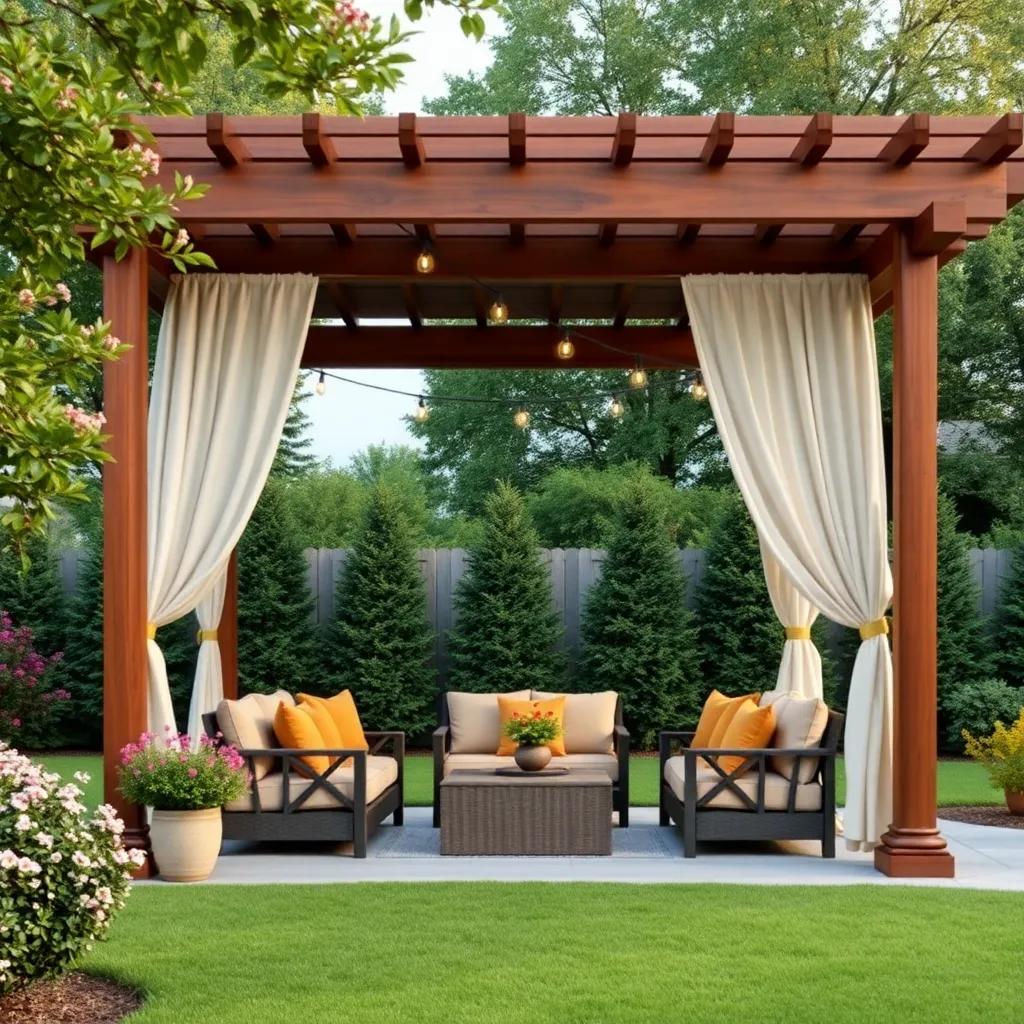
For those seeking a blend of open-air freedom and sheltered comfort, a pergola-gazebo hybrid could be the perfect solution. Combining the airy feel of a pergola with the shelter of a gazebo, these structures offer a unique and stylish option for your outdoor space. Start with a sturdy framework using materials like cedar or treated pine, which are both durable and weather-resistant. Consider adding a retractable canopy or polycarbonate roof panels to provide adjustable shade and rain protection. This flexibility makes it ideal for various climates and personal preferences.
When designing your pergola-gazebo hybrid, focus on integrating it seamlessly with your existing landscape. Choose dimensions that match the scale of your yard—typically, a 10×10 or 12×12-foot structure works well for most gardens. For a more advanced touch, incorporate lighting fixtures or climbing plants like wisteria or roses to enhance the aesthetic appeal. Beginners can start with a simple, kit-based model, while experienced DIYers might enjoy customizing their own design with intricate latticework or built-in seating. By tailoring your hybrid structure to your specific needs, you’ll create a functional and inviting outdoor retreat.
Gazebo Designs for Entertaining
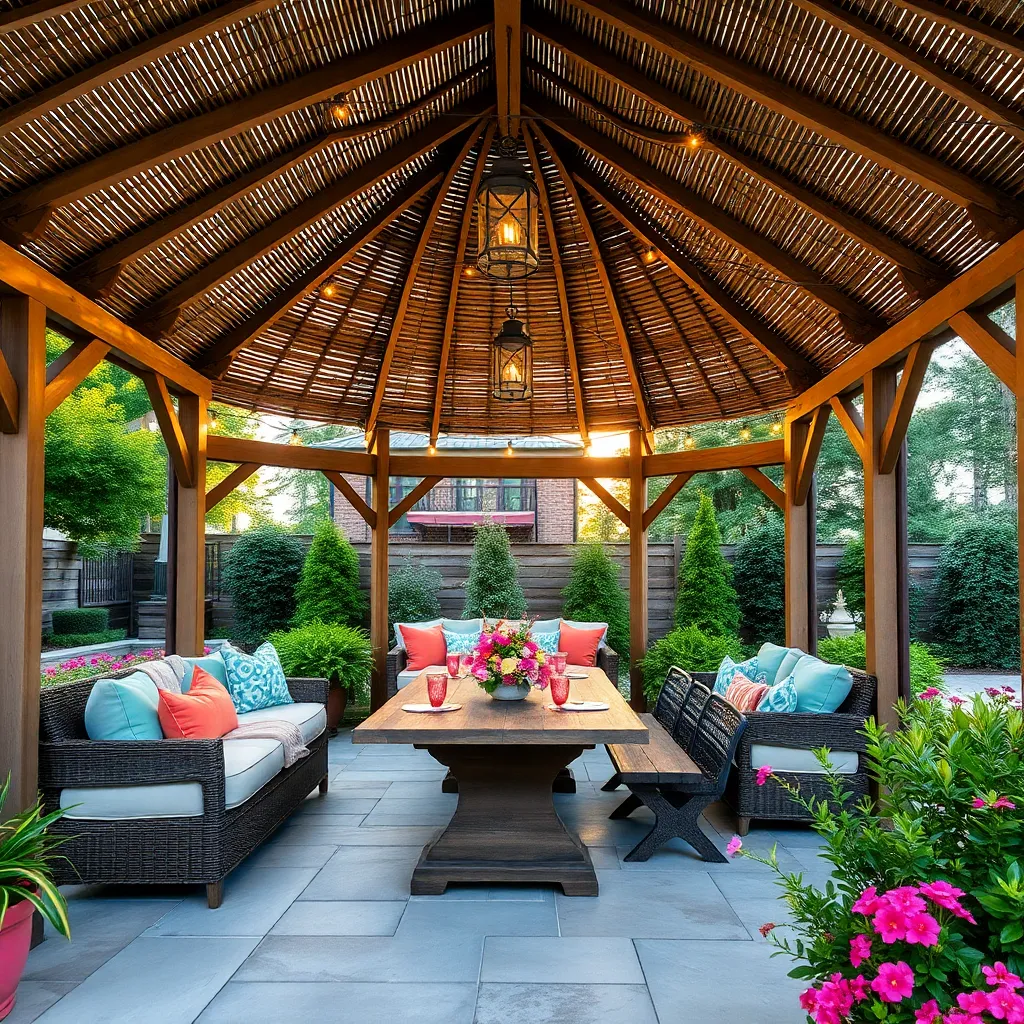
When designing a gazebo for entertaining, consider the layout and size to ensure it accommodates your needs. Start with a solid foundation made from materials like concrete or gravel to provide stability. Opt for a spacious design—at least 10 feet in diameter—to comfortably fit furniture and guests. For materials, cedar and pressure-treated lumber are popular choices due to their durability and weather resistance. Adding a built-in bar or counter can enhance functionality, making the space perfect for serving drinks and snacks.
Incorporating design elements like lighting and seating can elevate your gazebo from simple shelter to a true entertainment hub. Install outdoor string lights or lanterns to create a warm, inviting atmosphere in the evenings. For seating, consider built-in benches along the perimeter or modular furniture that can be rearranged as needed. Advanced gardeners might integrate plantings around the gazebo, using climbing plants such as wisteria or trumpet vine to add natural beauty and shade. Whether you’re hosting a summer barbecue or a cozy evening gathering, these thoughtful design choices will ensure your gazebo is the centerpiece of your outdoor entertainment space.
Incorporating Water Features
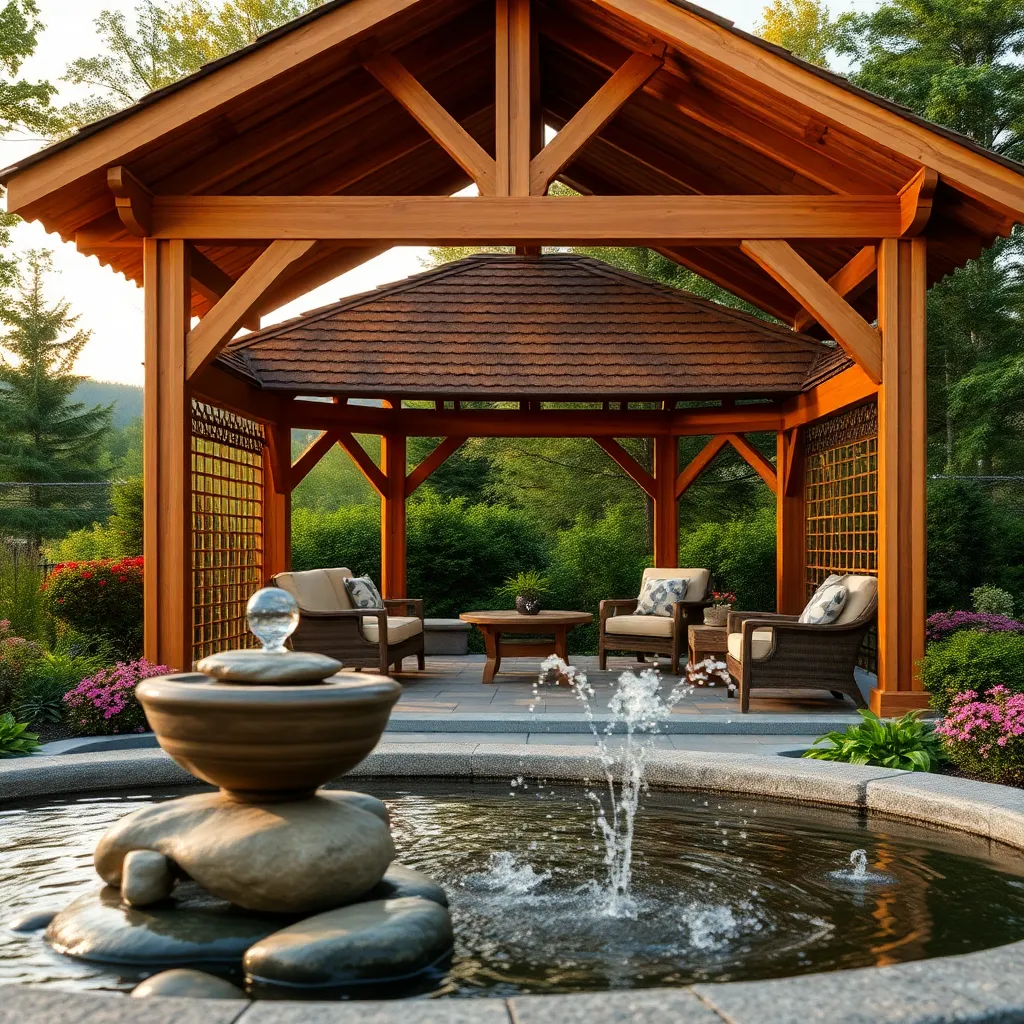
Integrating a water feature into your gazebo design can elevate your outdoor space into a serene retreat. Consider adding a small fountain or pond nearby, which not only enhances the aesthetic appeal but also creates a calming atmosphere with the gentle sound of flowing water. For beginners, a simple solar-powered fountain is an efficient and eco-friendly option that requires minimal maintenance while still providing a tranquil touch.
For a more advanced project, consider installing a cascading waterfall feature using natural stones to blend seamlessly with the landscape. Ensure proper water circulation and filtration to maintain clarity and prevent algae buildup; investing in a quality pump system is crucial for this setup. Materials like slate or granite are durable and can withstand various weather conditions, making them ideal for outdoor use. Tailor the dimensions of the water feature to complement the size of your gazebo, ensuring a balanced and harmonious design.
Shade Solutions for Sunny Days
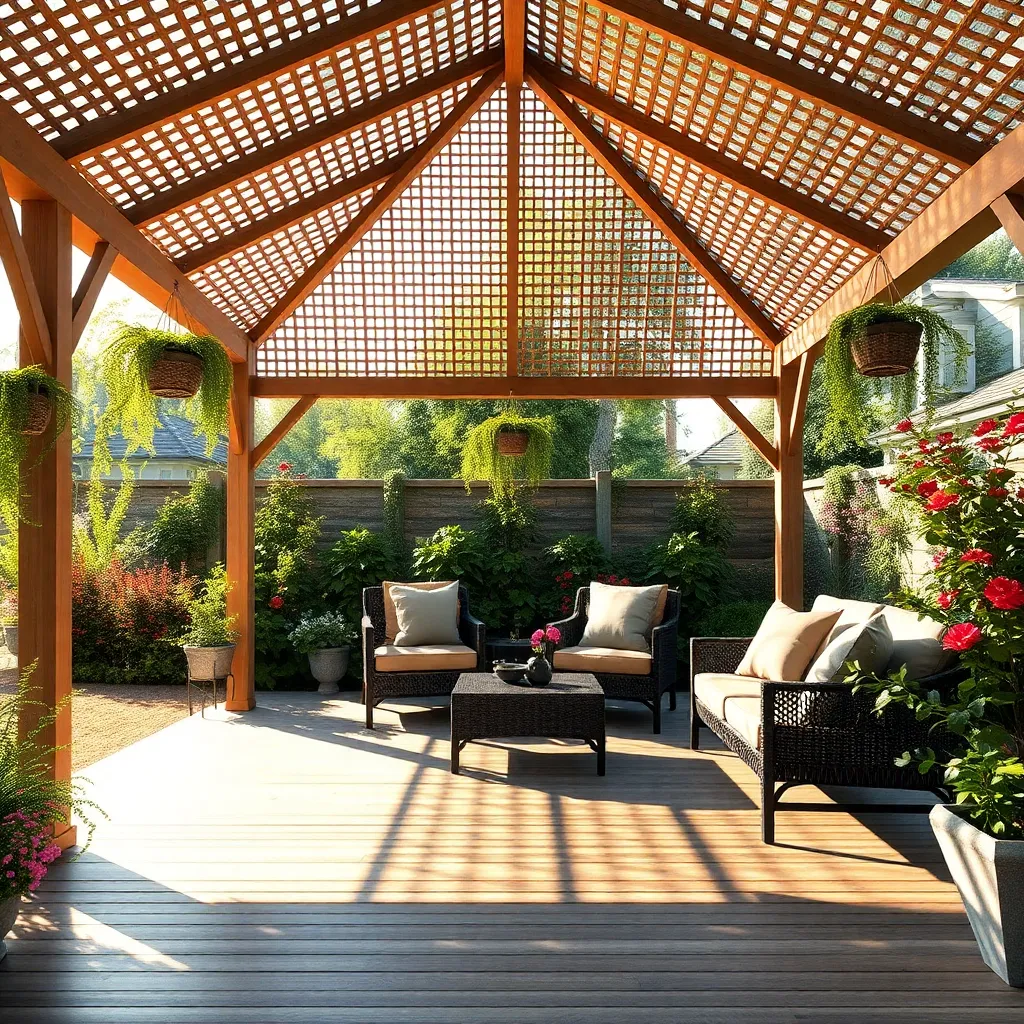
Creating an inviting outdoor space involves more than just aesthetics; on sunny days, a well-designed gazebo can provide much-needed respite. Consider using durable materials like weather-resistant fabric for the roof, which offers both shade and style. For beginners, a simple yet effective approach is using a polyester canopy with UV protection, ensuring it withstands harsh sunlight while maintaining its color. To add a touch of elegance, advanced gardeners might incorporate retractable shade panels, allowing for customizable coverage throughout the day.
Incorporating natural elements can further enhance your gazebo’s shade capabilities. Planting fast-growing vines such as wisteria or clematis along the structure can provide lovely dappled shade as they mature. For those looking to construct a more permanent solution, consider a wooden pergola with adjustable louvers, offering flexibility in light control. Keep in mind the importance of dimension: a standard gazebo size of 10×10 feet is ideal for most backyards, offering ample space for relaxation without overwhelming the area. Implementing these practical solutions will not only improve comfort but also increase the overall appeal of your outdoor retreat.
Gazebos with Built-In Seating
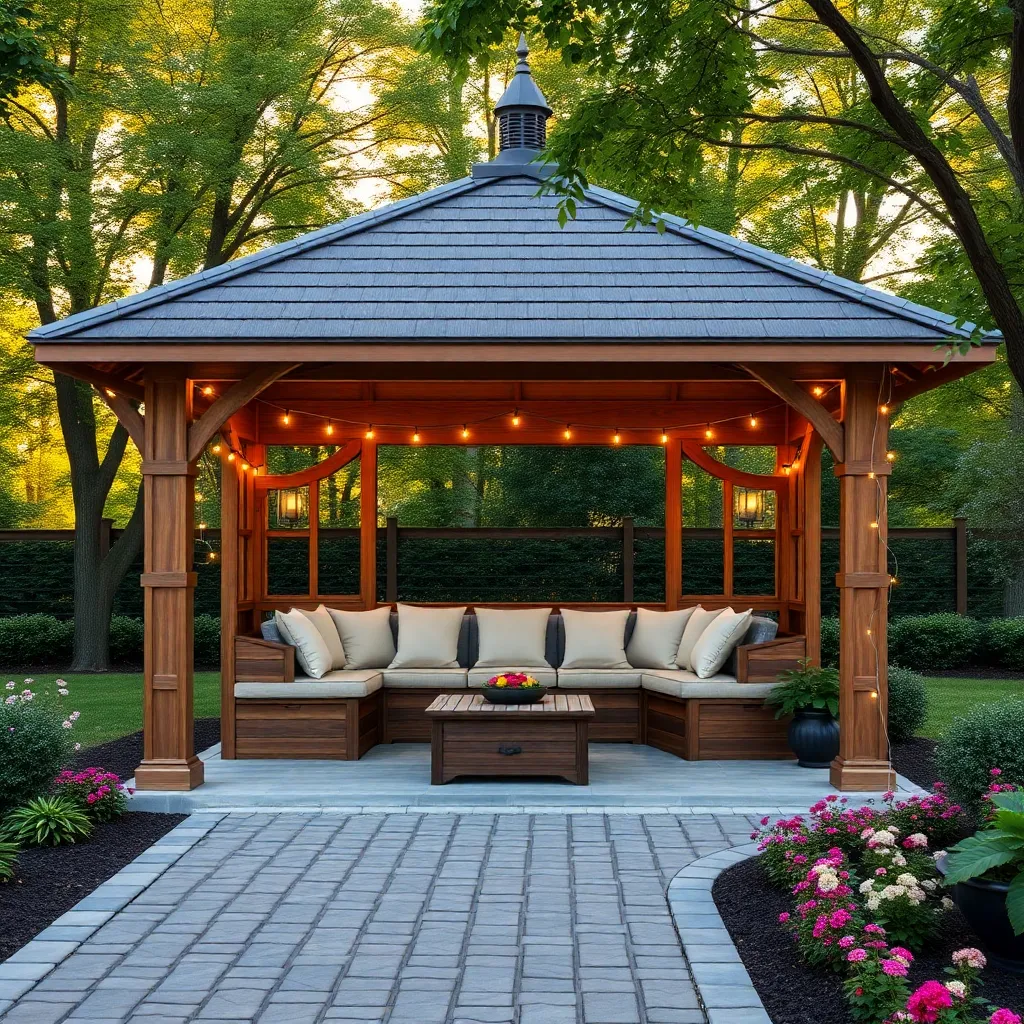
Integrating built-in seating into your gazebo design is a game-changer for maximizing comfort and functionality. Consider using weather-resistant materials like cedar or pressure-treated wood for durability and longevity. To enhance comfort, opt for cushioned seating with removable, washable covers. Beginners can start with a simple bench style along the perimeter, while more advanced DIY enthusiasts might incorporate curved seating or storage benches for added utility.
Enhancing your gazebo with design elements like planter boxes or side tables can elevate the outdoor experience. Attach these features directly to the seating structure to maintain a streamlined look and ensure stability. When planning dimensions, ensure the seating height is around 18 inches for comfort, and leave at least 12 inches of depth for sitting ease. By carefully planning and executing these features, you can create a welcoming and functional outdoor oasis that invites relaxation and social gatherings.
Integrating Lighting for Ambiance
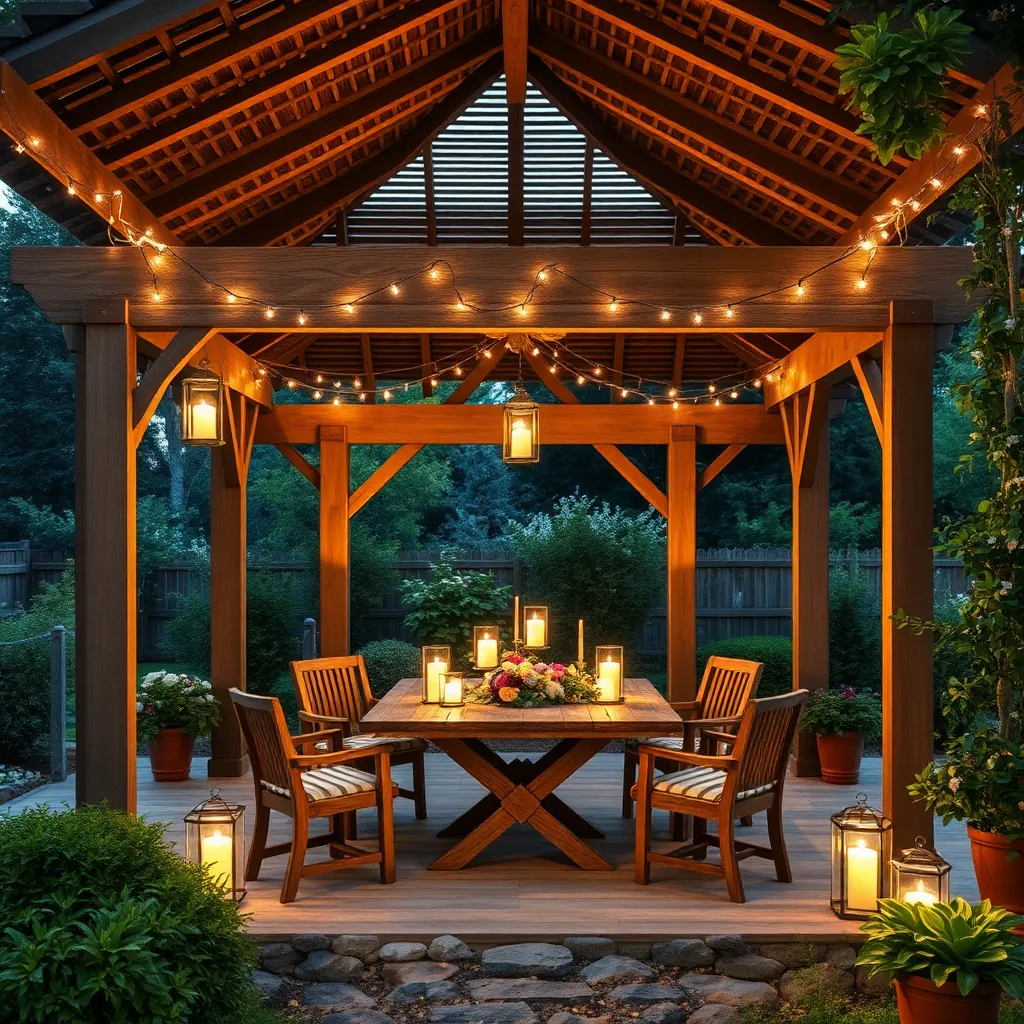
Creating the perfect ambiance in your gazebo can be achieved by integrating lighting that enhances its beauty and functionality. Start with solar-powered LED string lights to outline the roofline, providing a soft, inviting glow as dusk settles in. For beginners, this is a straightforward and energy-efficient choice, requiring minimal maintenance. More advanced gardeners might consider installing dimmable recessed lighting, which allows for adjustable brightness levels to suit any occasion—ideal for dinner parties or quiet evenings alone.
To further elevate the atmosphere, incorporate accent lighting by placing lanterns or battery-operated candles around seating areas. These elements not only enhance visibility but also add a touch of elegance and warmth. When selecting fixtures, opt for weather-resistant materials like stainless steel or powder-coated aluminum to withstand outdoor conditions. For those with a flair for design, integrating smart lighting systems that can be controlled via smartphone apps offers both convenience and customization, ensuring your gazebo is not just a shelter, but a captivating outdoor retreat.
Versatile Designs with Sliding Panels
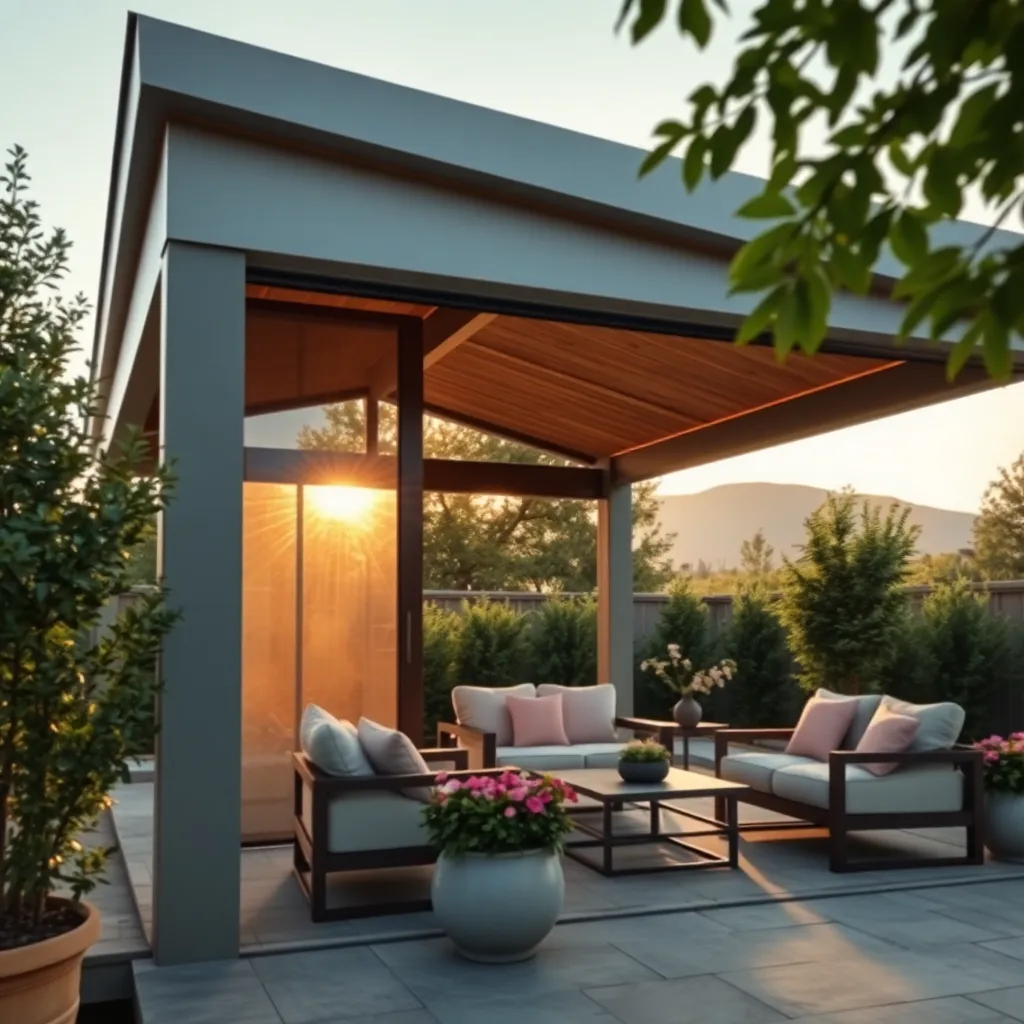
Sliding panels offer a dynamic solution for homeowners looking to enhance their outdoor spaces with versatility and style. These panels can be crafted from materials such as weather-resistant wood, aluminum, or tempered glass, allowing you to balance privacy and aesthetics. For a basic setup, consider using wooden panels with a clear sealant to protect against the elements, while more advanced designs might incorporate frosted glass for a modern touch.
To ensure functionality, install sliding panels with high-quality track systems that are suitable for outdoor conditions. Consider using stainless steel tracks to prevent rust and ensure smooth operation. Beginners can start with pre-fabricated panel kits available at home improvement stores, while experienced DIYers might explore custom designs that include automated systems or smart home integration. With these tips, you can create a flexible outdoor space that adapts to your needs throughout the year.
Open-Air Gazebos for Garden Views
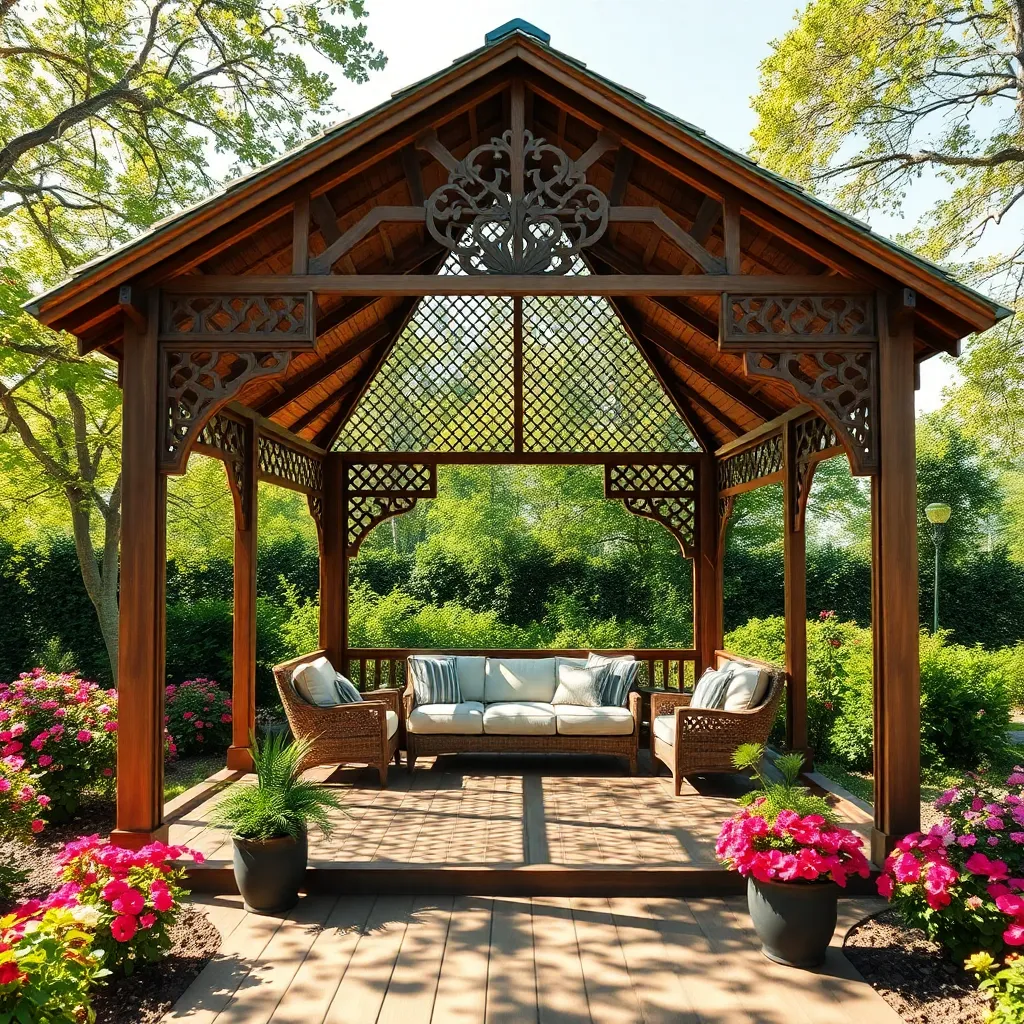
Open-air gazebos are a perfect way to embrace the beauty of your garden while providing a modest shelter from the elements. To get started, consider using durable materials like cedar or treated pine, which offer both longevity and natural resistance to weather. These structures can be enhanced with lattice walls or trellises, allowing climbing plants to weave through, adding a lush, natural aesthetic. Ensure the gazebo has a sturdy roof structure, using materials like polycarbonate panels or metal roofing for effective protection while still letting in light.
For a more personalized touch, integrate seating arrangements within the gazebo, such as built-in benches or swings, which allow you to enjoy the view comfortably. Advanced gardeners might want to incorporate solar-powered lighting to highlight the gazebo at night, creating an enchanting evening ambiance. Maintain a balance between functionality and aesthetics by selecting dimensions that suit your garden space—typically, a 10×10-foot gazebo offers ample room without overwhelming the landscape. Remember, the key to a successful open-air gazebo is blending it seamlessly with your garden’s natural beauty.
Conclusion: Creating Beautiful Outdoor Spaces
As we explored the ’15 Gazebo Designs That Transform Any Outdoor Space,’ we discovered more than just architectural beauty; we unearthed key insights into nurturing and enhancing our relationships. Each gazebo design symbolized core relationship concepts: the importance of strong foundations, the beauty of adaptability, the need for personal space, and the joy of shared experiences. We learned about creating inviting atmospheres, the significance of growth, resilience through storms, and the power of a supportive framework. These designs remind us that relationships, like gazebos, demand creativity, maintenance, and a touch of personalization to truly flourish.
Why not take an immediate step today by discussing with your partner which “gazebo” best reflects your relationship and how you can incorporate these principles into your daily life?
To ensure you have these valuable insights at your fingertips, save or bookmark this article. Doing so will provide you with ongoing inspiration and guidance on your relationship journey. Remember, with continuous effort and intentionality, your relationship can stand strong and beautiful, much like a well-crafted gazebo, ready to weather any season of life together.

